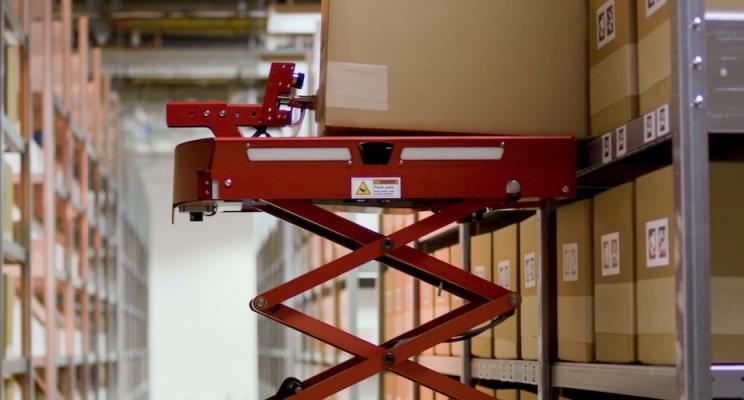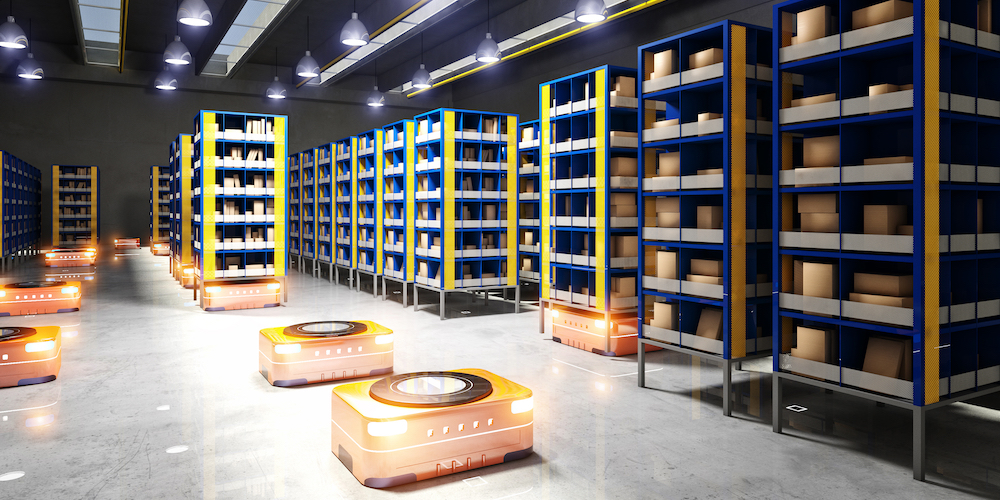
Automation is about using technology to perform a procedure or task without the assistance of people. And for more than half a century, industrial mobile robots have been hard at work performing repetitive tasks so people can concentrate on more meaningful work.
From hauling heavy loads to automated picking systems, here’s a brief history of the progression of mobile robots in the workplace.
Automated Guided Vehicle (AGV)
The first automated guided vehicle arrived in the early 1950s and was little more than a glorified tow truck, albeit one that did not require a driver or a fixed rail system, navigating instead by following a track of wires embedded in the factory floor that generated a magnetic field. Wires gave way to magnetic tape, optical strips and eventually laser guidance and other more sophisticated navigation systems, but the job of the AGV remains the same: move heavy materials along a defined route in a factory or warehouse.

An AGV designed to carry several different types of pallets. (Image Credit: JBT)
AGVs are typically used to safely transport bulky items such as stacks of pallets, rolls of paper or metal, and auto parts from one location to another. And since they don’t deviate from their set course, AGVs don’t require much in the way of onboard computing power, aside from collision avoidance sensors. They’re reliable, predictable workhorses, but they’re not easily adaptable.
Autonomous Mobile Robot (AMR)
Autonomous mobile robots are a significant upgrade from AGVs in many ways, most notably in their ability to navigate dynamic environments, which makes them particularly suited to work as fulfillment robots in an e-commerce warehouse. Using advanced vision sensors and machine learning, AMRs can evaluate their surroundings and operate autonomously within existing infrastructures—calculating the most efficient routes to their destinations on the fly rather than traveling predetermined paths.

AMRs moving shelves to a picking station. (Image Credit: Shutterstock)
AMRs often work alongside people in a warehouse setting, moving towers of items around a fulfillment center or shuttling items picked off shelves by workers back to a sorting or packing station.
Autonomous Mobile Manipulator Robot (AMMR)
Autonomous mobile manipulator robots—the kind of picking robot we design and build here at inVia—combine the autonomy of an AMR with the ability to manipulate goods on a shelf and bring them to the pick station. This significantly cuts down one of the biggest expenses incurred by fulfillment centers: walking time.

An inVia Robotics Picker robot retrieving a tote from a warehouse shelf.
Furthermore, AMMRs optimize routes to items in real-time as orders come in, using machine learning to constantly improve the fulfillment process.
Why Does it Matter?
Autonomous warehouse robots, in all their varying configurations, are valuable complements to any workforce. We can’t wait to see what capabilities the next generation of robots will have to offer.